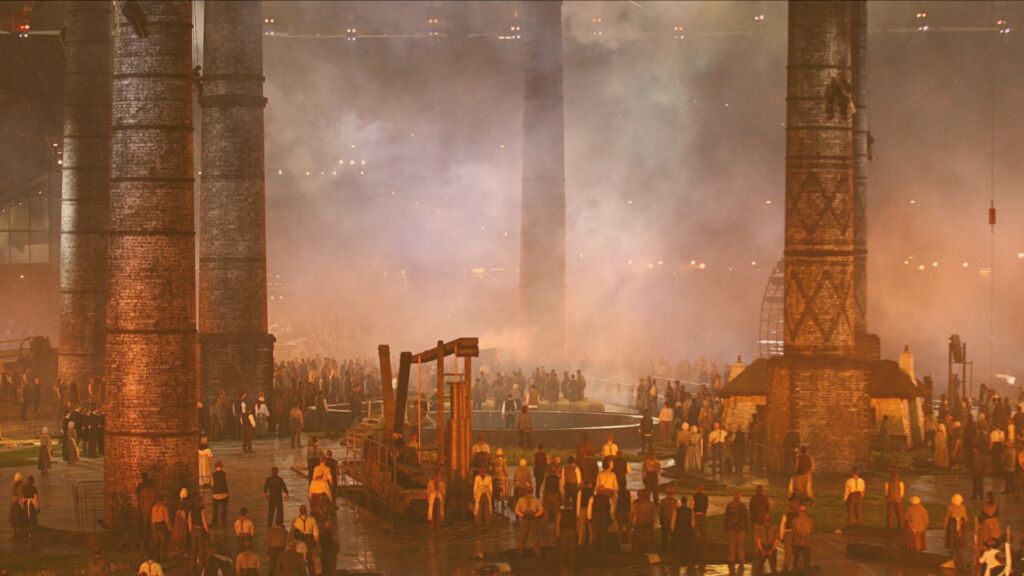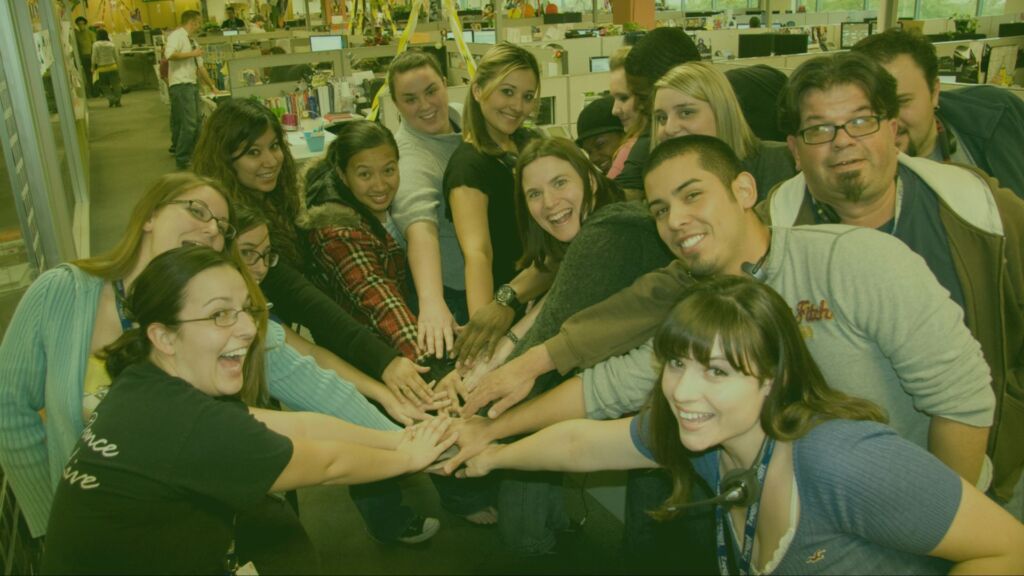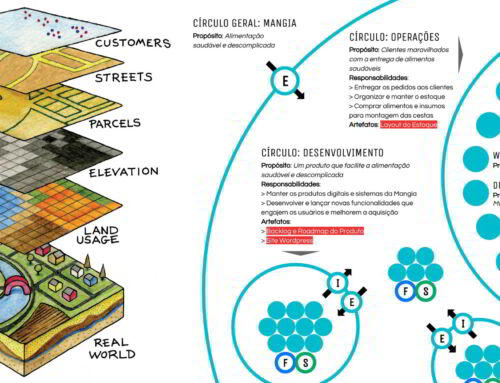Do you know two organizations that have completely different practices, management models, and cultures? One can be cold, bureaucratic and procedural. The other may have a younger, more inspirational, purpose-centered atmosphere. Why do those differences exist? This post aims to answer this question by looking at the different existent organizational development stages.
In his book Reinventing Organizations, Frederic Laloux describes five different stages of organizational development, each characterized by an adjective, a color, and a metaphor. Knowing these stages in detail will allow you to analyze more clearly where your organization is, as well as what are the next steps in its evolution.
The more advanced models are not necessarily “better” than the previous ones, in the same way a teenager is no better than a child. They are only able to handle higher levels of complexity. In addition, each model has its “shadows”, that is, its limitations and challenges. Finally, one stage does not nullify the other, but incorporates and transcends the former.
Impulsive Red

Organizations shaped in the impulsive paradigm emerged in the form of small conquering troops, led by an “alpha wolf”. This leader, exerts power through fear and strength, keeping the people around him under control. To maintain stability in this type of organization, the leader is surrounded by family members, who tend to be more loyal. If at any time his power is in doubt, someone will try to take it. Demonstrations of cruelty and public punishment are often used to create more fear, as this is the only way for the organization to keep intact. Scary? They still exist.
In this organizational development stage, there are still no formal hierarchies or titles. Therefore, these organizations don’t scale very well and can not guarantee prosperity in the long run. In short, they adapt better to chaotic environments and are lousy to deal with complex problems.
Mafias and street gangs are examples of red organizations in today’s world.
Conformist Amber
The move to Amber has opened up new possibilities for mankind. It was a leap from a tribal and horticultural world to the era of agriculture, states, civilizations, bureaucracies and organized religions. This paradigm brought a self-controlled and disciplined self, not as egocentric as in the red model. Amber societies have established morals that must be followed. Laws are immutable and made to create a fair world, where things are right or wrong. The authority to define morality now resides in a role, like a priest or the Pharaoh, rather than in a personality.
Amber organizations have brought two major innovations: long-term planning and stable organizational structures. These two technologies allowed this model to achieve results never before seen: irrigation systems, the pyramids and the great wall of China. Medium- and long-term planning has been possible thanks to the invention of the processes, which allow the replication of past experiences in the future. Unlike red organizations, power structures are no longer constantly changing, but are fixed in titles, hierarchies, and organizational charts. Under the Pope are the archbishops, under the archbishops are the bishops, and under them are the priests. Planning and execution are separate: whoever is at the top of the hierarchical pyramid thinks, who is at the base performs what was commanded.
The Catholic Church is the classic example of an Amber organization in the West.
Achievement Orange

The world is now no longer seen as a set of immutable rules – right and wrong – but as a complex machine governed by natural laws that can be investigated and understood. The paradigm of achievement was consolidated during the industrial revolution, with most major corporations now practicing it with intensity. Choose one: Coca-Cola, Nike or IBM.
The orange organizational development stage brought three major organizational technologies: innovation, responsibility and meritocracy. Although they still use the hierarchical pyramid, Orange organizations favor multidisciplinary teams, interdepartmental task force groups and external consultants: all with the aim of increasing communication and innovation. Management is undergoing a severe change as the organization begins to use the intelligence of several people to increase its competitiveness. Planning and strategy are no longer a privilege at the top, and control is exercised through management by objectives. Top tier leaders require a certain outcome and “no matter how, just get to that number.” Financial incentives and commissions are added to encourage competition among employees and the organization’s profitability. Meritocracy dictates that, in principle, everyone can scale the corporate hierarchy and reach a certain position.
Orange organizations look bright, but they also create an immense shadow. Because success is measured solely in terms of money and recognition, when they reach the top, people feel empty. One day they get tired of the race for success and collapse.
Pluralistic Green
The pluralistic organizational development stage comes in strong opposition to the amber and orange model. If hierarchy and abuse of power are harmful, the green paradigm attempts to abolish them altogether. The feelings of the members of the organization are valued, as well as cooperation, harmony and consensus. Equality is seen as the ultimate goal: everyone deserves respect and should be treated in the same way.
The three major innovations of the green model were empowerment, value–oriented culture, and the perspective of multiple stakeholders. Empowerment retains meritocracy, but leaders are encouraged to push decisions to the bottom. Servant and egalitarian leadership is valued and strongly present in culture, which is the mechanism that prevents green organizations from returning to the previous paradigm. Shareholders are no longer seen as the only party to be satisfied. Managers, employees, customers, suppliers, local communities, society and the environment must also be included in decisions. Leaders seek to make choices that everyone can thrive.
In these organizations, decisions by consensus are favored. However, some people abuse this tolerance to put intolerant ideas into practice.
The new emerging organizational development stage: Evolutionary Teal
Laloux identified a new emerging organizational development stage, called integral, authentic, responsive, or evolutionary. Practiced by a small set of organizations, the model has three main breakthroughs that are presented below.
Evolutionary Purpose
The teal organizations are seen by their members as an organism with a direction and life of their own. Instead of trying to predict and control the future through detailed plans, budgets and strategies, these organizations engage everyone in the process of listening attentively to the present, what the organization wants to become, and what purpose it wants to serve.
Self-Management
Wholeness
From the amber model, individuals began to incorporate their organizational positions so intensely that there was a separation between the “personal self” and the “professional self.” In the evolutionary model, everyone is invited to participate fully in the organization, without hiding their emotional, intuitive or spiritual part. Social masks are discouraged and become irrelevant as the environment strengthens relationships and builds a community.
Putting these three elements together, teal organizations are a completely different from the vision we have of work and the corporate world.
The five organizational development stages provide a great summary of how organizations operate and their underlying assumptions. This helps us understand where we are stepping and what could come next.
Today’s world is undoubtedly predominantly amber and orange. Still, many organizations are adopting green and teal practices. Have you noticed this in your organization? In what paradigm does it operate?









[…] the book Reinventing Organizations, Frederic Laloux describes the five stages of organizational development, the latter being the “Evolutionary Teal”. The three great innovations introduced by […]
[…] The transformation in the world of work that we are living had a beginning. Obviously, it wasn’t incubated in the innovation department of any company. Nor was it in the project management office (PMO). It all started with the agile software development movement. […]
[…] To deal with the side effects of the hierarchical structure and navigate the VUCA world, many experts propose the creation of contexts where self-organization is possible. This is the case of Steve Denning, who in his research realized that most high-performance teams are self-organized. Other evidence points to the same path, such as the Responsive Manifesto, Agile Software Development and Evolutionary Organizations. […]
[…] you may already know, we reference a lot the organizational development stages identified by Frederic in his book Reinventing Organizations. And even if it is difficult to frame […]
[…] The 5 Stages of Organizational Development by Frederic Laloux […]
[…] We can’t say that it’s not a choice (mine) to help such an organization. It is. Of course, the discovery of such toxicity only comes later. The shell is green, but the inside is amber-orange. […]
thanks for this useful summary. One thing that’s doesn’t ring true for me is that most organizations today aren’t Amber or Orange but rather Orange or GREEN. It’s Green that’s responsible for the identity politics, distrust of free speech, etc. Green is triumphant in the universities and so it’s effect on society is likely to grow unless consciously addressed by Teal.
[…] you are familiar with Frederic Laloux’s organizational development stages, you will readily identify horizontal management as related to the green-pluralist paradigm. […]